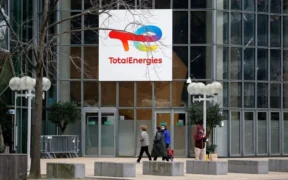UK Clean Energy Jobs Plan to Create 400,000 New Roles by 2030

• Clean energy workforce set to nearly double to 860,000 by 2030, backed by £50 billion in private investment since 2024.
• National strategy outlines 31 priority occupations — from electricians and welders to engineers and project managers — with training through five new Technical Excellence Colleges.
• New labour protections and a Fair Work Charter aim to make clean energy jobs high-quality, well-paid, and union-supported.
Britain’s Clean Energy Workforce Expansion
The UK government has released its first comprehensive Clean Energy Jobs Plan, forecasting 400,000 new clean-energy jobs by 2030 as part of its mission to make Britain a “clean energy superpower.” The strategy sets out how government, industry, and trade unions will collaborate to deliver a workforce capable of building, maintaining, and operating the country’s rapidly expanding renewable and low-carbon infrastructure.
The plan estimates that employment across clean-energy sectors will rise from around 440,000 in 2023 to 860,000 by the end of the decade, reflecting sustained growth in wind, nuclear, solar, carbon capture, and energy-efficiency projects. These industries already advertise average salaries exceeding £50,000 — about 35 percent higher than the national average.
Training for the Transition
To meet the projected demand, the government will establish five new Clean Energy Technical Excellence Colleges and invest more than £100 million in engineering skills. A further £1.2 billion per year will expand training for 1.3 million young people, including 65,000 additional learners annually by 2028–29.
The plan identifies 31 priority occupations — ranging from plumbers and welders to project managers and electrical engineers — expected to account for nearly 40 percent of direct clean-energy roles by 2030. Shortages in these trades have prompted new regional “skills pilots” in Cheshire, Lincolnshire, and Pembrokeshire, with £2.5 million in funding for training centres and career programmes.
Oil-and-gas workers in Scotland and the North Sea will receive £20 million in retraining support, while the Energy Skills Passport scheme — originally designed to help offshore engineers transition to renewables — will be expanded to nuclear and grid sectors.
Investing Across Regions
According to the Department for Energy Security and Net Zero (DESNZ), demand for clean-energy workers will be highest in Scotland, the East of England, and the North West — each projected to support 50,000 to 60,000 direct jobs by 2030.
Flagship infrastructure projects are already driving regional growth: the £14.2 billion Sizewell C nuclear plant in Suffolk will employ 10,000 people at peak construction, while the Acorn and Viking carbon-capture projects are expected to create 35,000 jobs combined. Since July 2024, clean-energy investments totaling £50 billion have been announced across the UK.
Labour Standards and Fair Work
Beyond job creation, the government has placed strong emphasis on job quality. Legislation will be amended to align employment protections for offshore renewable workers with those in oil and gas, extending national minimum-wage coverage beyond UK territorial waters.
A new Fair Work Charter, negotiated with the wind sector and trade unions, will link public funding to fair pay, collective bargaining, and strong workplace rights. Workforce criteria will also be embedded in energy-sector grants, including the Clean Industry Bonus, to ensure companies benefitting from public investment uphold fair-work principles.
RELATED ARTICLE: UK Unveils $10 Billion Clean Energy Development Initiative
Energy Secretary Ed Miliband described the plan as “pro-worker, pro-jobs, and pro-union,” arguing that “clean energy is the answer to bringing good, secure work to every region and nation of the country.” Trade-union leaders including the TUC and GMB welcomed the framework, calling it the “first serious plan in decades to rebuild Britain’s industrial heartlands” and ensure that “green jobs are good union jobs.”

Inclusive Growth and Social Mobility
The strategy includes tailored initiatives for veterans, school leavers, and ex-offenders — groups identified as having transferable skills relevant to clean energy. Veterans’ programmes will be piloted in the East of England, where over 60,000 people are expected to join the sector by 2030.
For young people, entry-level clean-energy roles pay on average 23 percent more than comparable occupations in other industries, offering a route to higher wages and long-term security.
Global and Economic Context
The UK currently lags behind Germany and Scandinavia in renewable-jobs intensity, with up to five times fewer clean-energy positions per capita. The new plan aims to close that gap through coordinated industrial and skills policy, backed by the Office for Clean Energy Jobs — a cross-government unit overseeing workforce data, policy alignment, and union engagement.
For investors and corporates, the plan provides visibility into the UK’s energy-workforce pipeline, with workforce forecasts to 2030 and clear government co-investment signals. For policymakers, it offers a replicable model of labour-market governance in the net-zero transition.
A Just Transition Framework
The plan’s broader ambition is to ensure the benefits of decarbonisation are evenly distributed — across regions, income levels, and generations. By embedding collective bargaining, training access, and fair-pay standards, the UK positions its clean-energy transition not just as an environmental imperative but as a cornerstone of inclusive economic renewal.
As Miliband noted, “Clean energy jobs are everywhere — in every coastal and industrial community, in every city and region. This plan will bring new opportunities to people’s doorsteps.”
Follow ESG News on LinkedIn















































































































